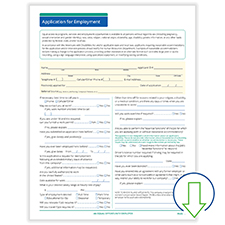
From quiet quitting, persistent disengagement and the great resignation, the work world has been rocked by numerous issues in the past few years. Challenges seem to lurk around every corner for employers of all sizes. To keep valuable workers from “turning off” and turning in their resignations, employers must look to proven and powerful employee retention tactics.
Learn why employee retention is so critical right now – and the five essential building blocks to fostering loyalty and longevity.
Why Employee Retention Matters
These days, employee retention is more than just a passing HR initiative; it’s critical to an organization’s survival and success. There are many reasons for prioritizing retention:
- Manage costs: Maintaining your current staff reduces the expense of recruiting, onboarding and training new employees
- Create stability: Employees who feel secure and valued are more likely to weather changes, which contributes to the stability of your business
- Enhance productivity: A cohesive and satisfied team is more efficient and productive, with a shared understanding of processes and expectations
Be aware, too, of the impact beyond business operations. A focus on employee retention contributes to a more positive workplace culture. When employees feel supported and engaged, they’re more likely to commit to their work and contribute constructively to the business. This positive culture, in turn, attracts top talent and enhances your image, creating a cycle of sustained success.
With that in mind, here are 5 solid building blocks to stronger employee retention:
- Keep the lines of communication open – The barrage of negative economic news can make even the most confident employees anxious about their job security. Now, more than ever, you need to manage the rumor mill and provide clear updates on the company’s well-being. Whether the news is good or bad, employees deserve to be kept in the loop. Communicate honestly and frequently about how the company is doing and clarify the role each employee plays in holding up the business.
- Give employees the gift of time and wellness – Although you may not be able to reward employees with pay raises, bonuses and other monetary rewards, you can provide other types of perks. Consider offering voluntary time off, flex time or telecommuting (if you don’t already). Additional time off, whether for vacation or other activities that promote a healthier work-life balance, is a benefit that most employees value. Health and wellness programs are a big draw for employees, as well. This can include gym memberships, mental health resources and wellness workshops.
- “Invest” in employee development and training – Training is a win-win for you and your employees. Investing in employee development not only enhances their skills but also demonstrates a commitment to their long-term success. This might involve cross-training, where you expand an employee’s value and provide essential relief in busy or under-staffed departments.
- Recognize employees in new, meaningful ways – Everyone likes to be acknowledged for a job well done. In fact, a recent survey revealed that 82 percent of employees feel happier at work when they’re recognized. Just as important, 63 percent of recognized employees are “unlikely” to look for a new job. To incorporate more recognition into your company culture, take the time to write out a thank you card, call attention to an employee’s achievement in a meeting or if your budget will allow, give a gift card, personalized desktop accessory or other small token of your appreciation. Depending on your onsite or hybrid work environment, other possible low-cost perks include casual dress days, providing lunch to a team or department that meets a specific goal, or offering preferred parking for a designated employee.
HRgifter service, you can connect employees to a robust selection of cards,
with easy administration and delivery of the cards.
- Mentor employees and create a solid rapport – Managers and supervisors, pay attention: Taking an active interest in your employees’ well-being is critical to their satisfaction and loyalty. Listen to your employees’ concerns, give regular, constructive feedback, provide the necessary technology and tools for the job, and, most of all, develop a level of trust and respect with them. Most employees don’t leave their jobs; they leave their bosses. A 2018 report by Udemy found that nearly 50 percent of employees quit their job because of a bad manager. Are you providing enough reasons for your employees to stay?






 Shopping cart
Shopping cart













